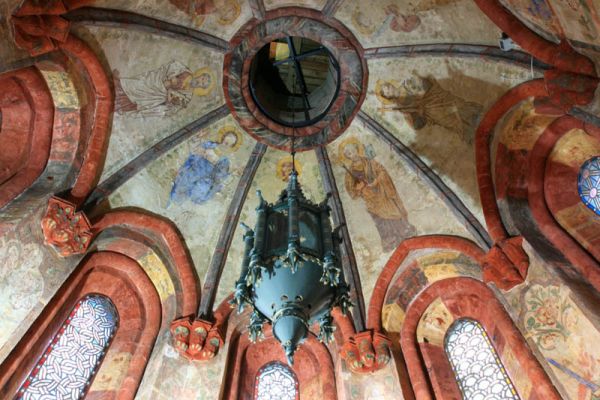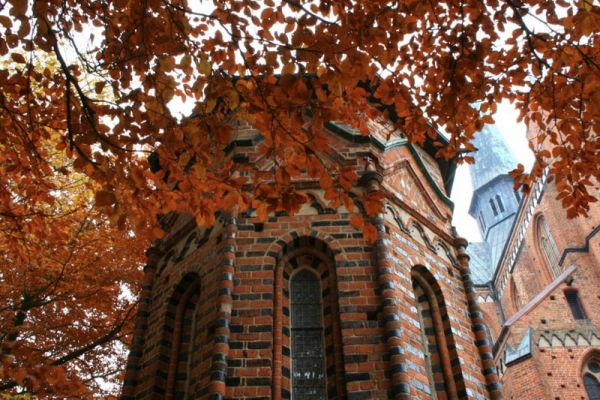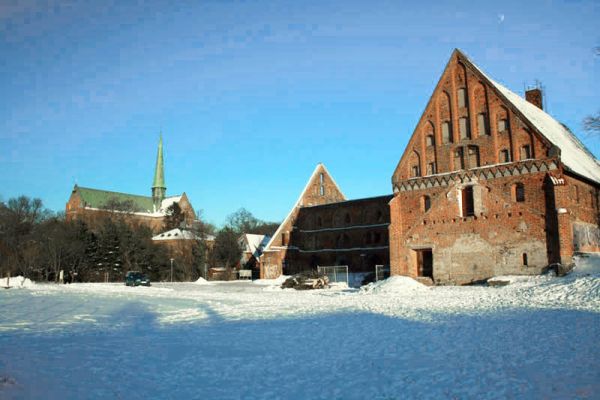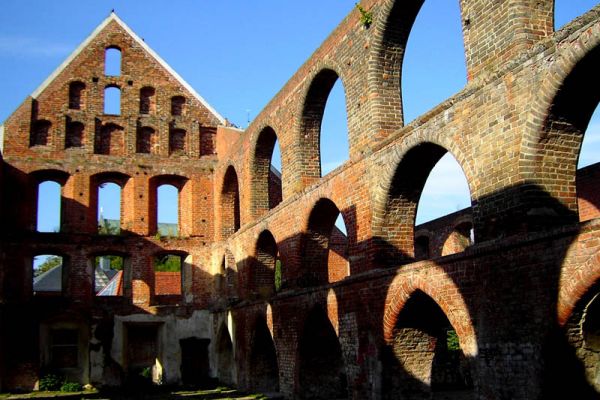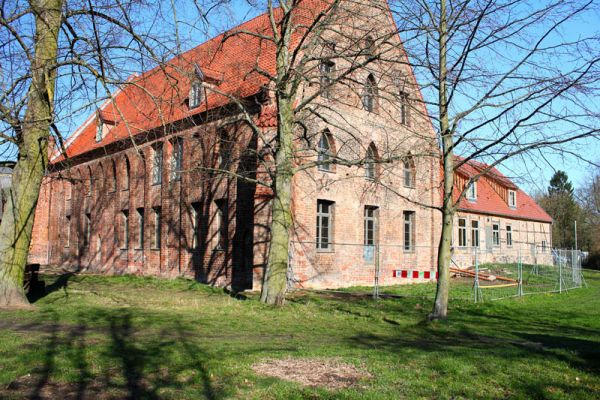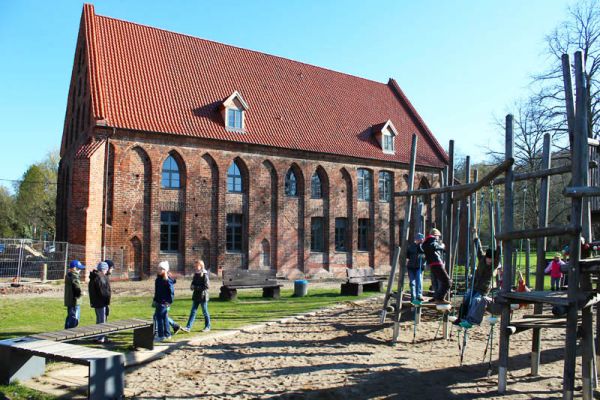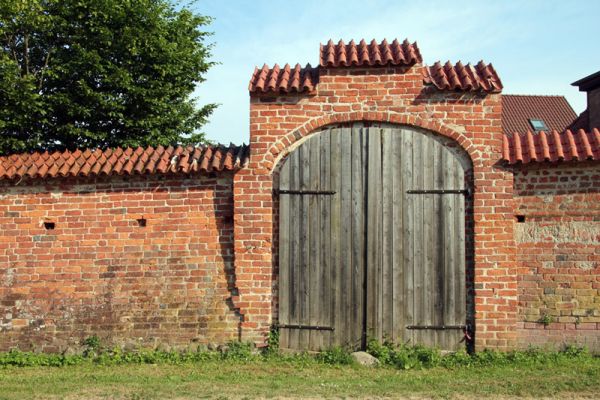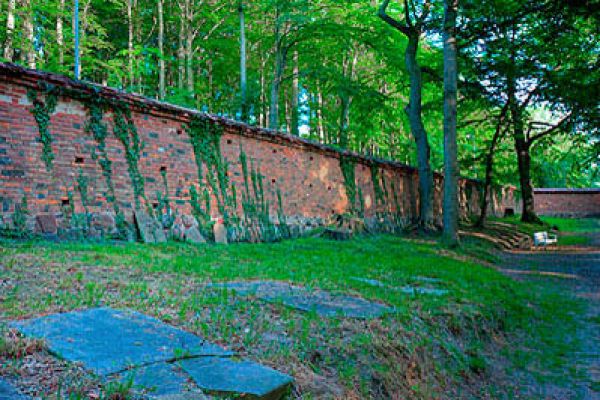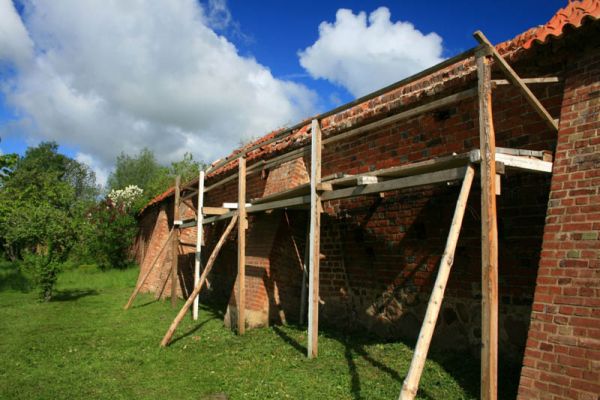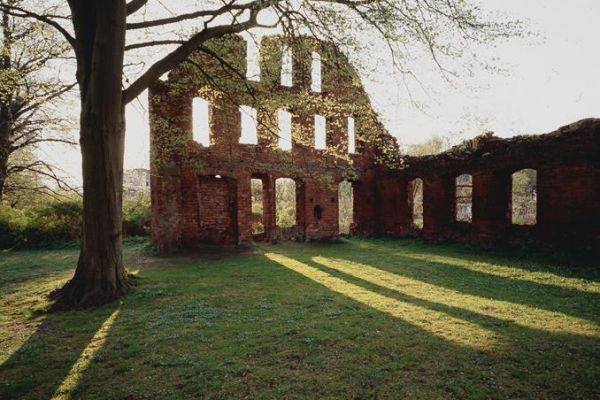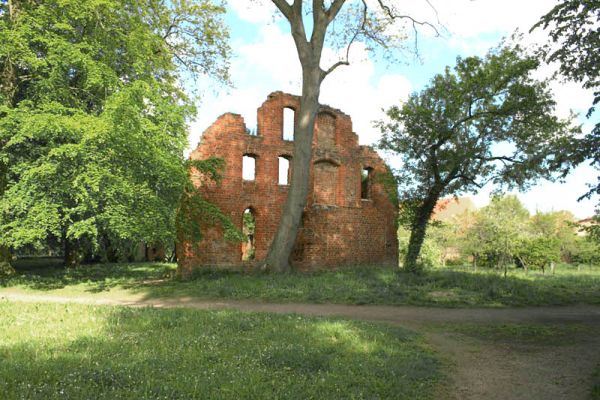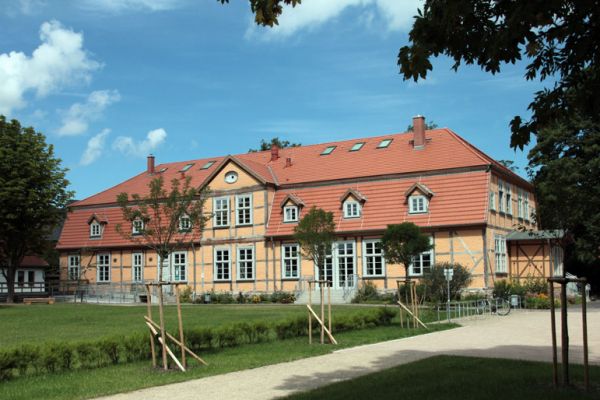Monastery area around the Minster
The Ossuary
Warning: Trying to access array offset on value of type null in /html/joomla/components/com_osgallery/helpers/osGalleryHelperSite.php on line 44
Apart from the one in Harderhausen near Paderborn, this is the only example of its kind.
Round sticks and masonry built alternatively of glazed and unglazed bricks point to a late Romanesque early Gothic style. There is a brick rosette above the portal and a round arch frieze decorates the wall over the windows. A stone lantern with a death light used to hang on the roof.
It was restored in stages between 2001 and 2010. In the north of the death gate of the cathedral is the monks` cemetery, which can now only be recognized as a flat hill.
Even today it is an area of quiet and remembrance. Another cemetery was opened on the eastern ring wall in the 18th century.
The Trade Building
The impressive main building is situated from north to south, three-storeyed and previously there were three more granaries. The eastern nave was two-storeyed and has been without a roof since the 19th century. Before it was set on fire by a young fireman it was used as a restaurant for students and working people.
Warning: Trying to access array offset on value of type null in /html/joomla/components/com_osgallery/helpers/osGalleryHelperSite.php on line 44
Now the northern part is an open ruin. A makeshift roof protects the southern part. The north and south gables of the main building are magnificently designed: pointed and segment arch windows with transoms, trefoil friezes at the bottom of the gable divide and decorate the surface.
To the west is the mill house, whose gable is marked by graduated pointed blind arches over trefoil arch friezes.
You can recognize the openings for the mill stream that used to drive the mill wheel on the north and south wall. The stream was given an artificially raised bed and still runs through the building.
The malt house, the brewery as well as the granary, working and living rooms were inside the two buildings.
The Granary
Warning: Trying to access array offset on value of type null in /html/joomla/components/com_osgallery/helpers/osGalleryHelperSite.php on line 44
From 1270 to 1280 the Granary was erected as a three-storeyed brick building for storage purposes. Originally there were six storage levels.
In the 17th century the building was shortened at its eastern end. The undivided eastern gable dates from that time.
The western one and the long sides are divided by pointed arch blinds reaching up to the main moulding.
The Granary was reconstructed and became a two-storey school-house.
Today it is a youth and recreation club run by the Grain House Association. (Renovation 2009/10).
The Gates
Warning: Trying to access array offset on value of type null in /html/joomla/components/com_osgallery/helpers/osGalleryHelperSite.php on line 44
Originally, the monastery could be entered and exited through three gates.
The western gate, which was linked with the gatekeeper's house and the former gate chapel, permitted both a wider and a narrower passage.
The southern gate is similar, however without any decoration on top. T
The northern gate, as it looks at present, is newer.
The wide opening to the east dates from the 18th century (1795). Low arches serve the flow of the streams.
The Ring Wall
Warning: Trying to access array offset on value of type null in /html/joomla/components/com_osgallery/helpers/osGalleryHelperSite.php on line 44
The 1,4 km long ring wall was erected between 1283 and 1290. Kirchberger's Chronicle wrote about Abbot Konrad III "und das Clostir ummemuren" (and builds a wall around the monastery).
The average height is 2,50 m. The wall is almost completely preserved. It was built in one go using the same technology and it passes marshy subsoil for long stretches.
In the 19th century the wall was partly reconstructed.
At present it is being repaired and rebuilt. Nowhere else is such a big brick monastery wall so completely preserved.
The Wolf´s Barn
Warning: Trying to access array offset on value of type null in /html/joomla/components/com_osgallery/helpers/osGalleryHelperSite.php on line 44
The so-called Wolf's Barn was built from about 1280 to 1290 as a two-storey brick building and presumably served as a hospital and inn.
The present name may stem from the former name wool barn for it was used as a store and work house for the production of cloth up to the 19th century.
Only the northern wall and parts of the east and west gables are preserved.
The two gables are divided by pointed and segmented arches.
The Office House
Warning: Trying to access array offset on value of type null in /html/joomla/components/com_osgallery/helpers/osGalleryHelperSite.php on line 44
The so-called Amtshaus was erected by Johann Christoph Heinrich von Seydewitz as a hunting lodge of the duke from 1793 to 1801.
Later on it served the ducal administration.
It was built on the foundation of the monastery guest house.
The one-storey half-timbered building with a half-hipped mansard roof is crowned by a triangular front gable on the northern side.
The Amtshaus belongs to the group of buildings erected since 1800 which identify Doberan, together with Heiligendamm, as the former summer residence of the Mecklenburg dynasty.
After the restoration in 2014, it now serves as the community center of the Protestant Lutheran church.




